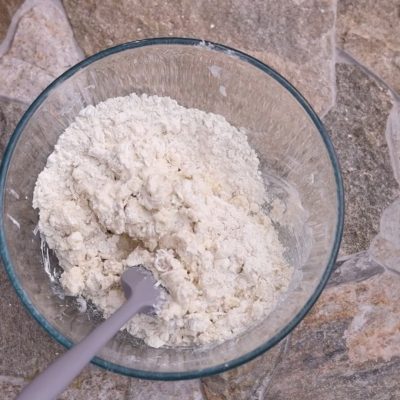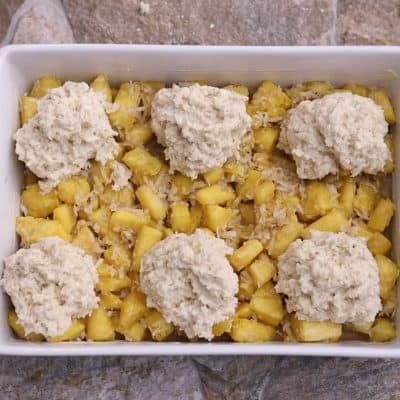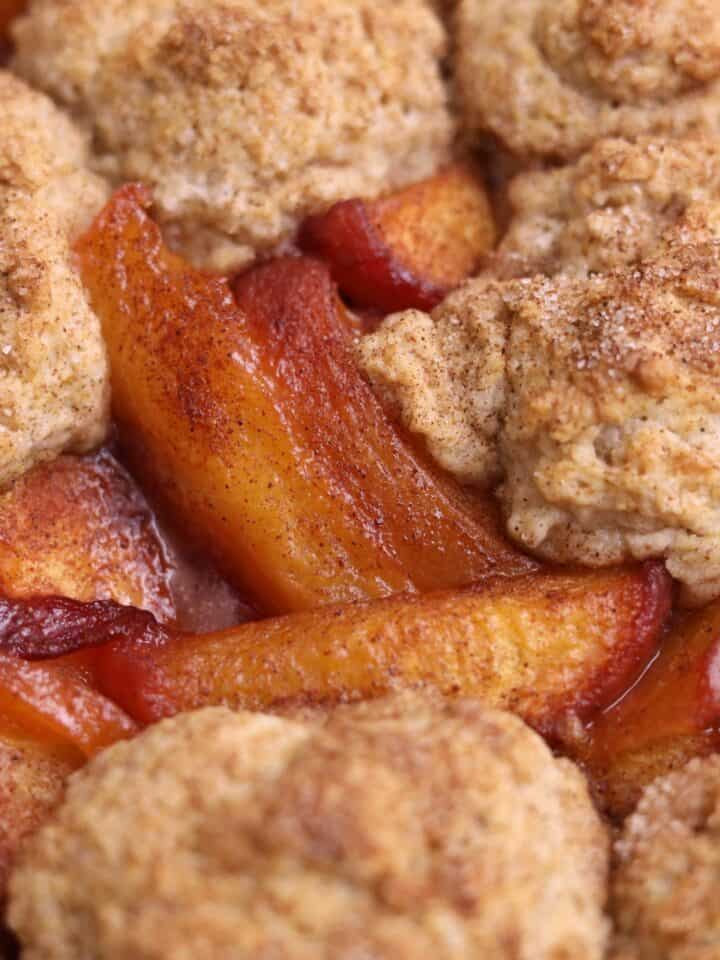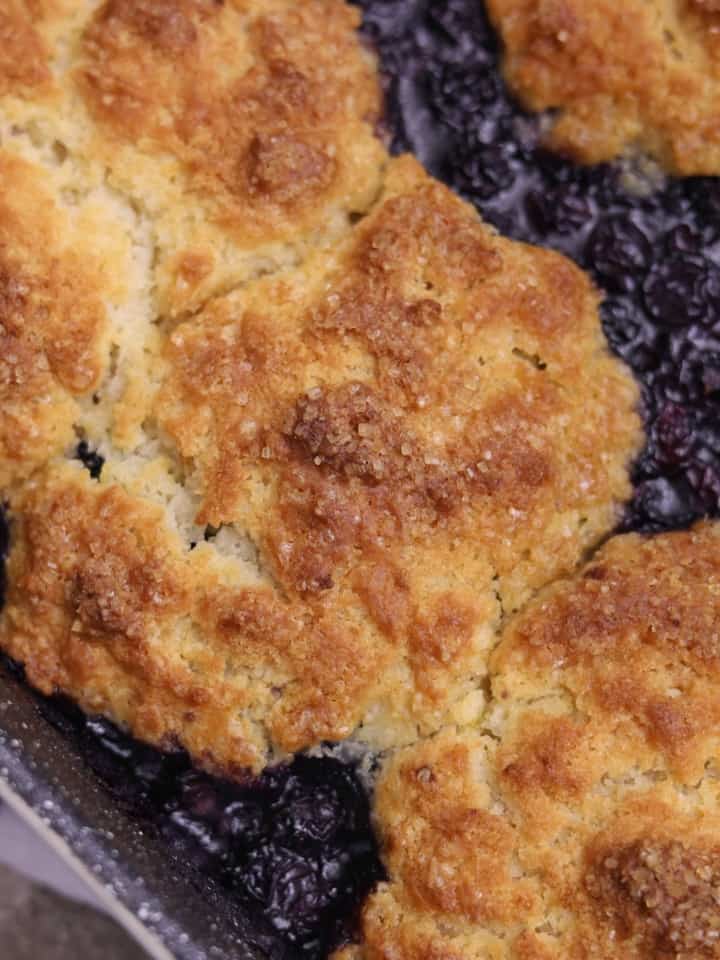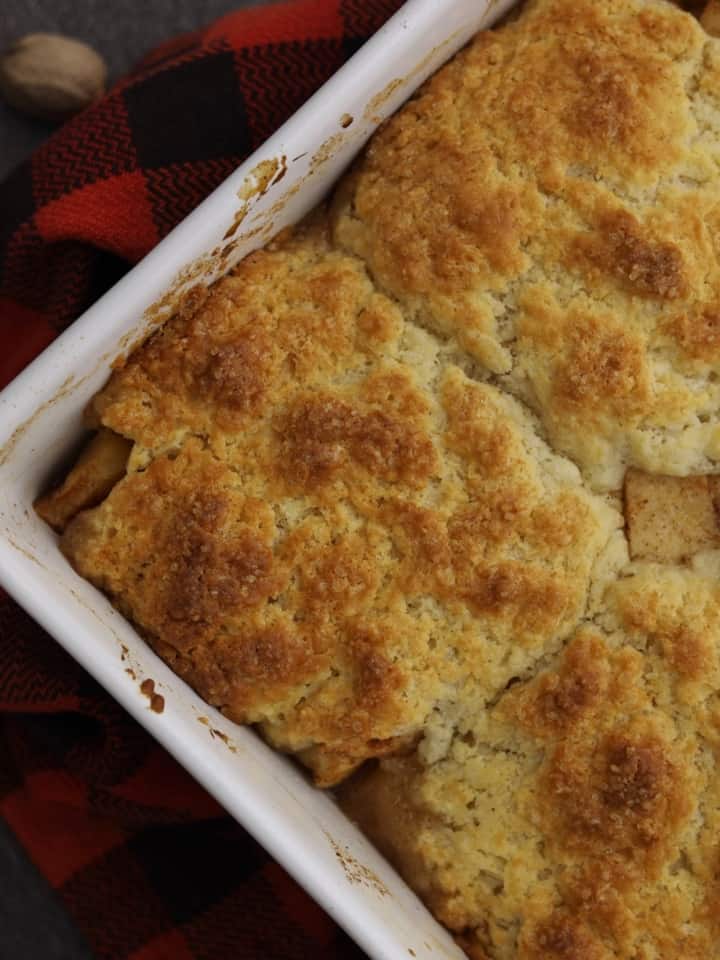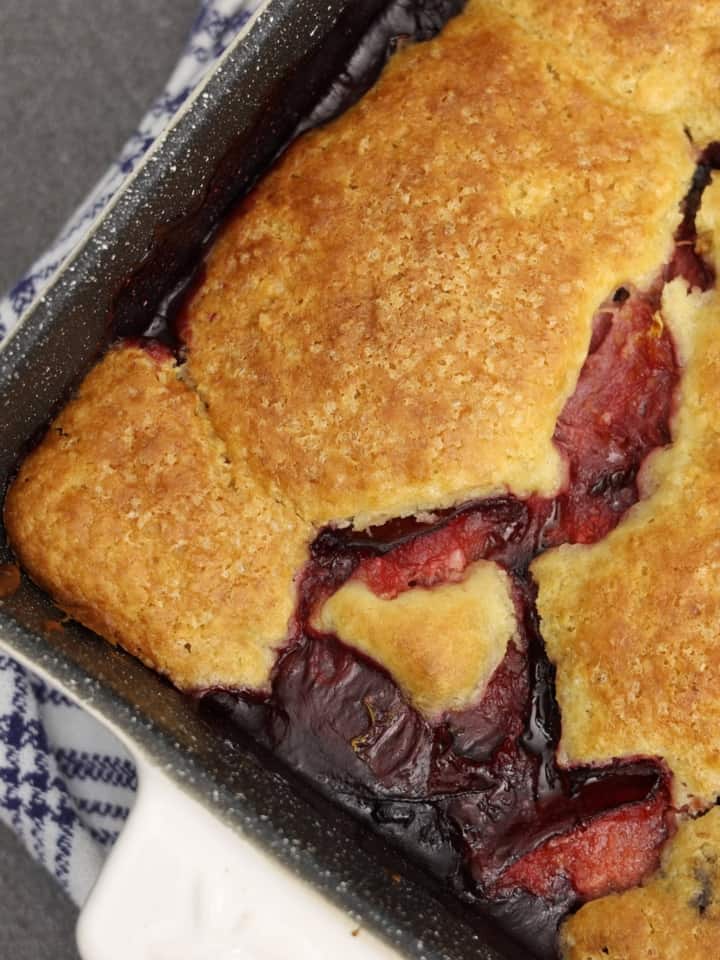Pineapple Cobbler is a tropical-inspired dessert that takes the classic cobbler recipe to a whole new level with the addition of shredded coconut. The combination of juicy pineapple, sweet coconut, and buttery biscuit topping creates a dessert that's both comforting and exotic.
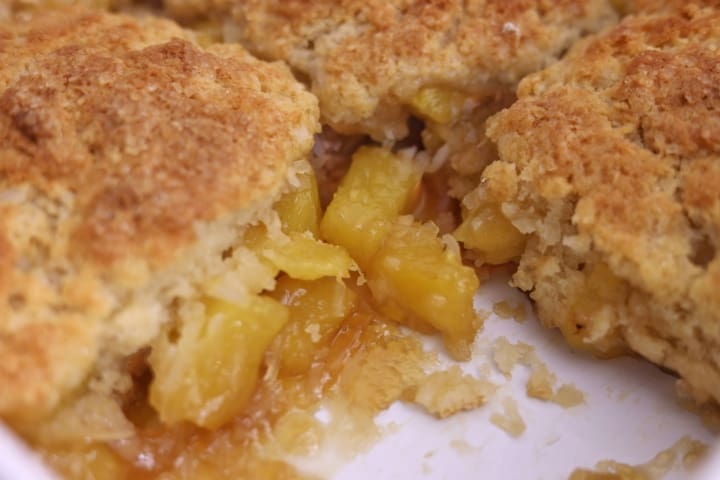
The filling for this cobbler starts with fresh, juicy pineapple that's cut into cubes and combined with shredded coconut, cornstarch, granulated sugar, light brown sugar, fresh lemon juice, and coconut extract. This mixture is then spooned into a buttered baking dish, ready to be topped with the homemade sweet coconutty biscuit dough.
The biscuit dough is made with a combination of all-purpose flour, granulated sugar, light brown sugar, baking powder, baking soda, kosher salt, cold unsalted butter, coconut extract, buttermilk, and shredded coconut. The addition of coconut to the biscuit dough adds a subtle tropical flavor and a slight crunch to the finished product.
The biscuit dough is then spooned over the top of the pineapple mixture and sprinkled with Demerara sugar before being baked until the topping is golden brown and the filling is thick and bubbly. The finished cobbler is best served warm with a scoop of vanilla ice cream or a dollop of whipped cream. The combination of sweet pineapple, shredded coconut, and buttery biscuits creates a dessert that's comforting and is sure to please even the most discerning dessert lover.
This Pineapple and Coconut Cobbler recipe is perfect for any occasion, from summer barbecues to cozy winter nights. It's easy to make with simple ingredients and can be enjoyed all year round. Whether you're in the mood for something comforting, this dessert is sure to satisfy your sweet tooth and transport you to a tropical paradise.
For more fruit cobbler recipes, be sure to check out our other tasty options like Peach Cobbler, Blueberry Cobbler, Plum Cobber, Apple Cobbler, and Strawberry Cobbler. These fruity desserts are perfect for any occasion and are sure to be a crowd-pleaser. Experiment with different fruit combinations and toppings to create your own unique versions of classic cobbler recipes.
How to Make Pineapple Cobbler
Note: The full instructions are provided in the recipe card below.
Preheat the oven to 375°F and set an oven rack in the middle position. Grease an 11” x 8.75” baking dish with butter; set aside. In a medium bowl, combine the pineapple, sugars, lemon juice, cornstarch, coconut extract, and shredded coconut. Stir to incorporate and set aside. In a large bowl, whisk together the flour, sugars, baking powder, baking soda, shredded coconut, and kosher salt. Add the cubed butter, and work it into the flour mixture with a pastry cutter or your hands until it resembles coarse bread crumbs.
Whisk buttermilk and coconut extract together in a glass measuring cup or small bowl; add it to the flour and butter mixture and stir together with a rubber spatula just until combined; do not overmix. If needed, add a tablespoon or two of buttermilk at a time until the biscuit dough reaches a moist but not wet consistency. Transfer the pineapple mixture to the prepared baking dish. Using a large spoon, dollop spoonfuls of biscuit batter over the pineapple mixture; sprinkle with the remaining tablespoon of Demerara sugar.
Bake until the tops are golden brown, and juices are thick and bubbling, for about 45 to 50 minutes. If the biscuits are browning too much, cover loosely with foil. Remove the pan from the oven and let the cobbler cool slightly before serving it with a scoop of vanilla ice cream or a dollop of whipped cream.
See more Fruit Cobbler Recipes:
📖 Recipe
Easy Pineapple Cobbler
Tools
- Rubber
- Spatula Foil
- Pastry
- Cutter
Ingredients
For the Pineapple Filling:
- 2 tablespoons cornstarch
- 6 tablespoons granulated sugar
- 6 tablespoons light brown sugar or granulated sugar
- 1 tablespoon fresh lemon juice
- 1 teaspoon coconut extract or vanilla extract
- 1 whole fresh pineapple (about 4 cups), cut into cubes
- 1 cup sweetened shredded coconut
For the Sweet Biscuit:
- 1-½ cups all-purpose flour
- ¼ cup sweetened shredded coconut
- 3 tablespoons granulated sugar
- 2 tablespoons light brown sugar
- 1-¾ teaspoons baking powder
- ¼ teaspoon baking soda
- ¼ teaspoon kosher salt
- 1 stick (8 tablespoons ) cold unsalted butter, diced
- ¾ cup plus 2 tablespoons buttermilk or homemade buttermilk ,cold
- 1 teaspoon coconut extract or vanilla extract almond extract
- 1 tablespoon Demerara sugar or granulated sugar , for sprinkling
- Vanilla ice cream , for serving
Instructions
- Preheat the oven to 375°F and set an oven rack in the middle position. Grease an 11” x 8.75” baking dish with butter; set aside.
- In a medium bowl, combine the pineapple, sugars, lemon juice, cornstarch, coconut extract, and shredded coconut. Stir to incorporate and set aside.
- In a large bowl, whisk together the flour, sugars, baking powder, baking soda, shredded coconut, and kosher salt. Add the cubed butter, and work it into the flour mixture with a pastry cutter or your hands until it resembles coarse bread crumbs. Whisk buttermilk and coconut extract together in a glass measuring cup or small bowl; add it to the flour and butter mixture and stir together with a rubber spatula just until combined; do not overmix. If needed, add a tablespoon or two of buttermilk at a time until the biscuit dough reaches a moist but not wet consistency.
- Transfer the pineapple mixture to the prepared baking dish. Using a large spoon, dollop spoonfuls of biscuit batter over the pineapple mixture; sprinkle with the remaining tablespoon of Demerara sugar. Bake until the tops are golden brown, and juices are thick and bubbling, for about 45 to 50 minutes. If the biscuits are browning too much, cover loosely with foil.
- Remove the pan from the oven and let the cobbler cool slightly before serving it with a scoop of vanilla ice cream or a dollop of whipped cream.
Notes
To reheat: If the cobbler is cold from the fridge, let it sit at room temperature for 15-20 minutes before reheating. Preheat the oven to 300°F and cover the cobbler with foil. Reheat the cobbler in the oven for about 20-25 minutes or until warm through. Remove the foil and continue reheating for an additional 5-10 minutes or until the biscuit topping is crisp. Remember that reheating the cobbler may alter the texture of the biscuit topping slightly, but the flavors will still be delicious. Enjoy the Pineapple Cobbler for days to come by storing and reheating it properly. Make-Ahead Make the filling and the biscuit dough as directed in the recipe.
Assemble the cobbler in the baking dish but do not bake it.
Cover the cobbler tightly with plastic wrap and aluminum foil and refrigerate for up to 1 day.
When ready to bake, preheat the oven to 375°F and remove the plastic wrap and foil from the cobbler.
Bake the cobbler for 45-50 minutes or until the biscuit topping is golden brown and the filling is bubbly. Making the Pineapple Cobbler ahead of time is a great option if you want to save time or prepare it for a special occasion. Just be sure to store it properly and bake it fresh for the best flavor and texture. How to Freeze Allow the cobbler to cool completely to room temperature.
Wrap the cobbler tightly with plastic wrap and then with aluminum foil. Label the container with the date of freezing.
Place the wrapped cobbler in the freezer and freeze for up to 2 months.
When ready to reheat, remove the cobbler from the freezer and let it thaw in the refrigerator overnight.
Preheat the oven to 300°F and cover the cobbler with foil.
Reheat the cobbler in the oven for about 20-25 minutes or until warm through. Remove the foil and continue reheating for an additional 5-10 minutes or until the biscuit topping is crisp. Note that freezing the cobbler may alter the texture of the biscuit topping slightly, but the flavors will still be delicious. Enjoy the Pineapple and Coconut Cobbler for up to 2 months by freezing it properly and reheating it as needed.
All nutritional information is based on third-party calculations and is only an estimate. Each recipe and nutritional value will vary depending on the brands you use, measuring methods, and portion sizes per household.



